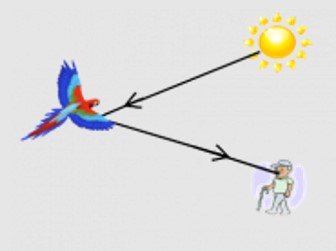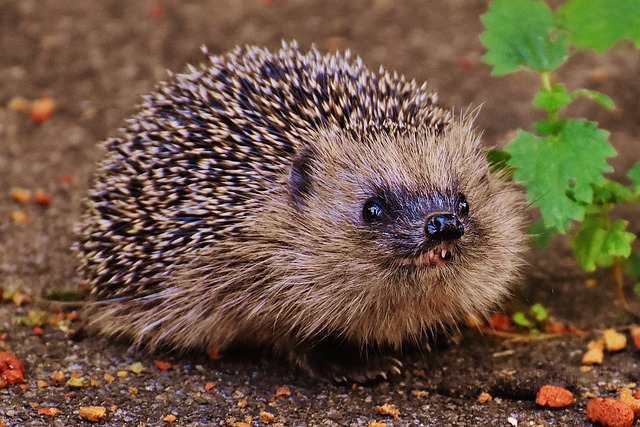Did you know that the lens in our eye actually turns things upside down?
We won't go into too much detail here, but because the lens in our eye is curved, it flips around what we see and turns it upside down! Thankfully, our brains know what to do with this information and it turns it the right way round again for us - pretty clever stuff!

The reason we can see things is because of luminous objects.
A luminous object is anything that emits or gives out light energy on its own.
Can you think of any luminous objects?
The Sun, a torch, a lamp or a street light are all luminous objects because they create light energy.

Without light energy, there is darkness. Darkness is an absence of light.
When light hits objects, it travels in straight lines, bounces off objects and the light rays reflect into our eyes, allowing us to see!

Imagine looking into a garden at night time - would you be able to see anything?
You might see the edge of some things if you looked long enough (once our eyes adjust to the dark), but without a luminous object, it is hard for humans to see.
Nocturnal animals such as foxes and hedgehogs have special cells in the back of their eye that allows them to see better in the dark.

Humans have rod and cone cells - rods help us see black and white, cones help us see the visible colour spectrum. Nocturnal animals have lots more rods, which allows them to see black and white (or dark and light) much more clearly than humans and this helps them see in the dark!
Let's look at this diagram:

Some key parts of the eye to remember:
- The lens - focusing lens that allows finer focus - more detail.
- The cornea - clear front surface of the eye - a fixed focus.
- The iris - the coloured part of the eye - a muscle ring that changes how much light is let into the eye.
- The pupil - the black part - a hole inside the iris that lets light into the eye, to reach the retina.
- The retina - this part is covered with light sensitive cells. Information on shape, colour and pattern is picked up by the retina and carried to the brain via the optic nerve.
In this activity, we are going to be thinking about how our eyes see objects and how luminous objects are used!








